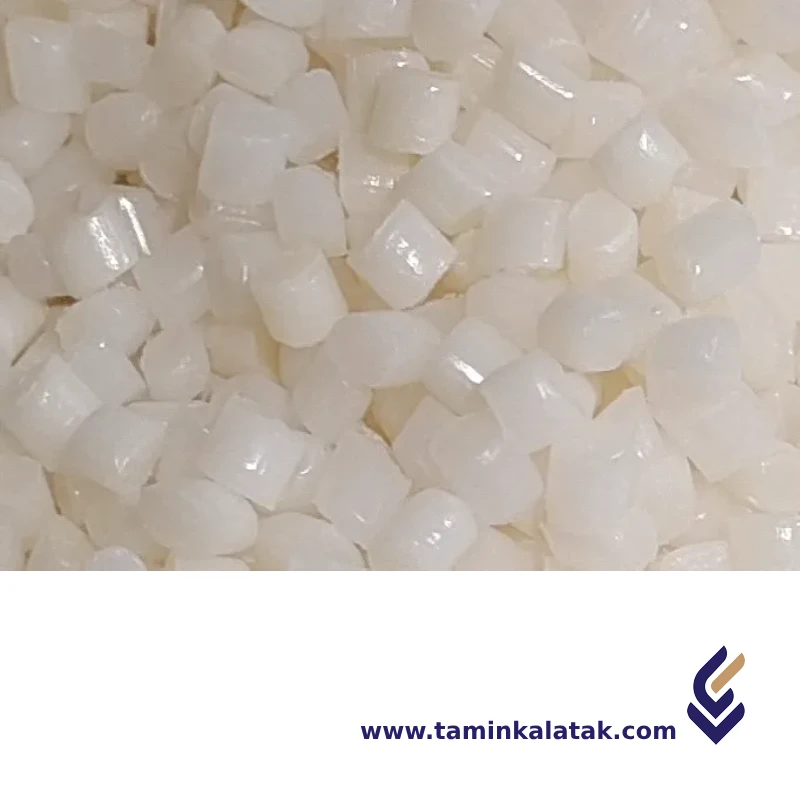Polymers are made up of very large molecules made up of many repeating units called monomers, which ultimately form this long polymer chain
A compound is a polymer blend mixed with additives, fillers, and reinforcements to achieve specific properties for end-use applications. A masterbatch is a concentrated mixture of additives or pigments in a carrier resin, used to enhance plastics without altering their base properties.
Antibacterial Masterbatch
Antibacterial Masterbatch is a concentrated additive used in plastic manufacturing to provide antimicrobial properties to the final product. It contains antibacterial agents—such as silver ions, zinc-based compounds, or organic biocides—dispersed in a carrier resin. When incorporated into plastic during processing, it helps prevent the growth of bacteria, fungi, and other microbes, enhancing hygiene and durability.
Structure
The structure of an antibacterial masterbatch consists of a carrier resin, an antibacterial agent, dispersing agents, stabilizers, and processing aids. The carrier resin, such as polyethylene (PE), polypropylene (PP), or polystyrene (PS), serves as the base material that ensures compatibility with the final plastic product. The antibacterial agent is the key active ingredient, which can be silver-based (Ag+ ions), zinc-based (ZnO, Zn ions), organic biocides (such as triclosan or quaternary ammonium compounds), or copper-based (Cu+ ions). These agents work by disrupting bacterial cell membranes, inhibiting their metabolism, or preventing their adhesion to surfaces. To ensure uniform distribution, dispersing agents and stabilizers are added to prevent agglomeration and degradation of the antibacterial particles. Additionally, processing aids enhance the flow properties and thermal stability of the masterbatch during plastic manufacturing. In terms of functionality, the antibacterial particles are encapsulated within the carrier resin and gradually migrate to the surface over time, providing long-lasting antimicrobial protection. This structure makes antibacterial masterbatches highly effective in applications such as medical devices, food packaging, and consumer goods, ensuring improved hygiene and product durability.
Properties
Antibacterial masterbatch possesses a range of properties that make it an effective solution for antimicrobial plastic applications. It provides broad-spectrum antimicrobial protection, inhibiting the growth of bacteria, fungi, mold, and algae while ensuring long-lasting effectiveness through the gradual release of active agents. Many formulations use a non-leaching mechanism, meaning the antibacterial agents remain embedded in the polymer matrix, preventing washout or depletion. The masterbatch is highly dispersible, ensuring even distribution of antibacterial agents without compromising the mechanical strength or flexibility of the final plastic product. Additionally, it exhibits excellent thermal stability, withstanding high processing temperatures (typically between 200–300°C) without degradation. Many formulations are also UV and oxidation-resistant, ensuring long-term performance in various environments. Chemically, antibacterial masterbatch is compatible with a wide range of polymers, including PP, PE, PET, PVC, and ABS. It meets strict safety and regulatory standards, making it non-toxic and safe for food contact applications, with compliance to FDA, EU, and REACH regulations. Furthermore, it is easy to incorporate into plastic manufacturing processes such as extrusion, injection molding, and blow molding, and can be customized to achieve specific antimicrobial performance levels.
Applications of Antibacterial Masterbatch
- Food Packaging – Prevents bacterial growth on plastic packaging for longer shelf life.
- Medical Devices – Used in surgical instruments, hospital trays, and equipment to maintain hygiene.
- Consumer Products – Incorporated in household items like cutting boards, toothbrush handles, and baby products.
- Textile Industry – Used in antimicrobial fabrics for sportswear, medical textiles, and upholstery.
- Automotive Industry – Applied to interior components to reduce microbial contamination.
- Electronics – Used in device casings, keyboards, and remote controls to prevent bacteria buildup.
- Public Transport & Infrastructure – Implemented in handrails, seats, and handles to maintain hygiene in public places.
Advantages of Antibacterial Masterbatch
Prevents Bacterial Growth – Reduces microbial contamination on plastic surfaces.
Enhances Product Longevity – Prevents material degradation caused by bacteria.
Improves Hygiene & Safety – Ideal for healthcare, food, and consumer products.
Odor Reduction – Prevents bad smells caused by bacterial activity.
Customizable – Can be tailored to different polymers and processing requirements.
Cost-Effective – Long-term savings by reducing the need for frequent cleaning and replacements.
Disadvantages of Antibacterial Masterbatch
Potential Toxicity – Some antibacterial agents may raise health concerns.
Regulatory Compliance Issues – Must meet strict safety and environmental regulations.
Limited Effectiveness – May not work against all bacteria and fungi.
Environmental Concerns – Some formulations may contribute to antimicrobial resistance.
Increased Cost – Adds to production expenses compared to standard plastics.
Performance Variation – Effectiveness can depend on temperature, humidity, and exposure conditions.
Applications
Antibacterial masterbatch
| Products | MFI(g/10 min) | Density(g/cm³) | Applications | Processing method | Data Sheet | MSDS |
|---|---|---|---|---|---|---|
| Antibacterial masterbatch | 5-50 | 0.9-1.5 | Food Packaging Medical Equipment Household Products Textiles & Fibers Automotive Components Electronics & Appliances Public Transport & Infrastructure | Injection Molding Extrusion Blow Molding Film & Sheet Extrusion Fiber Spinning |







